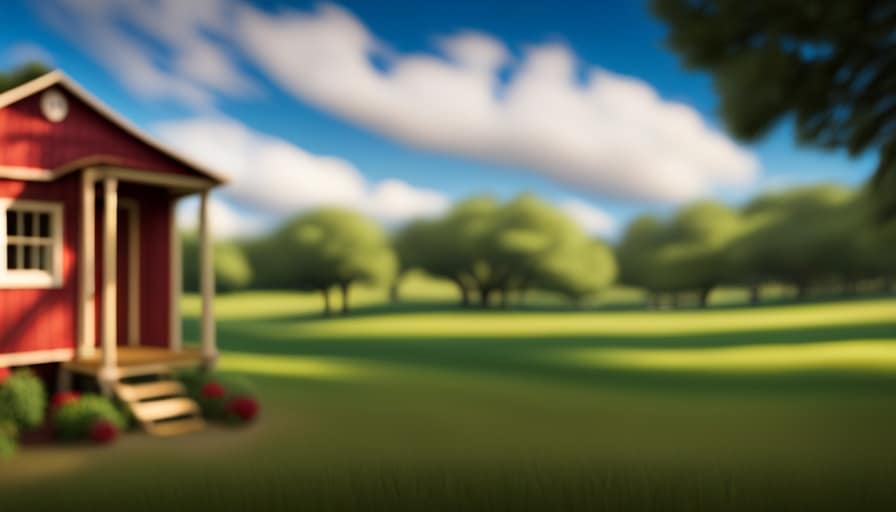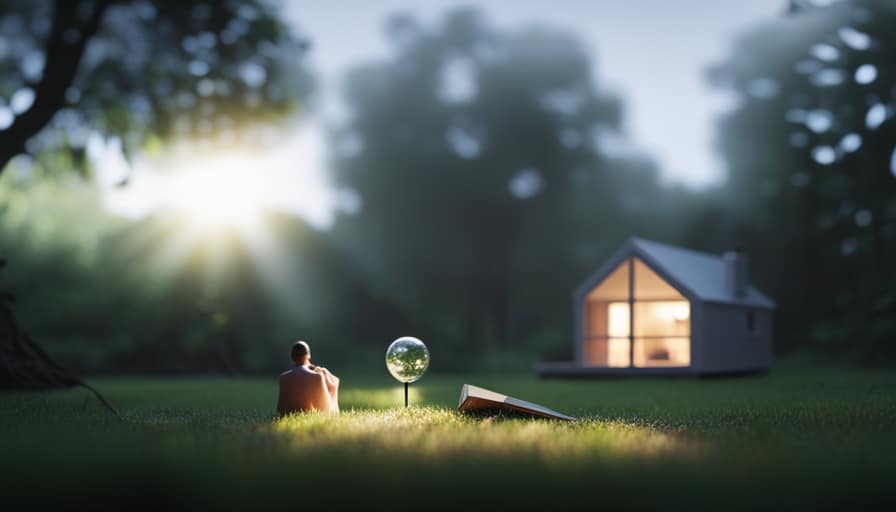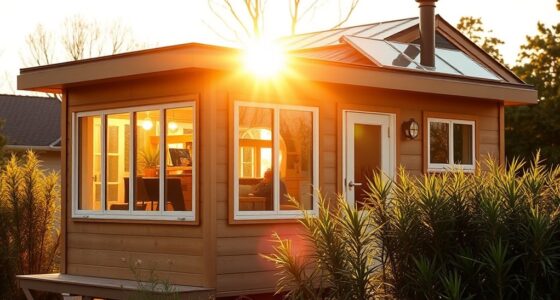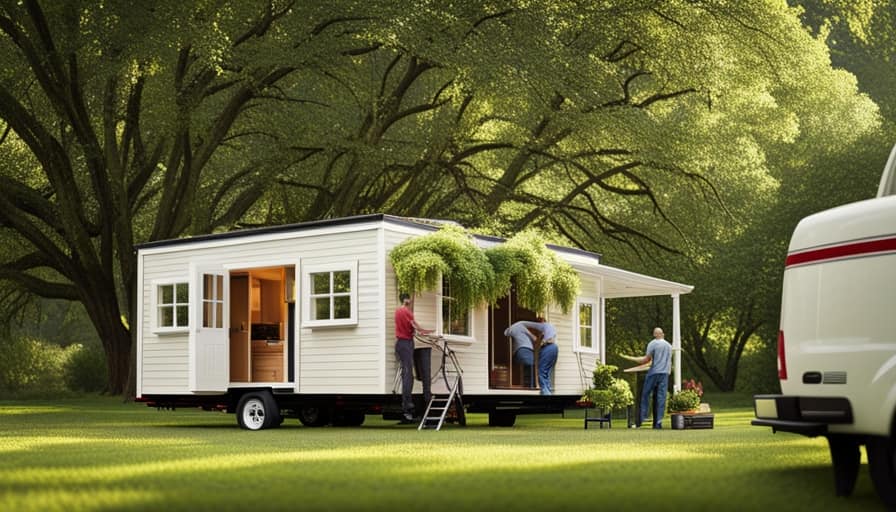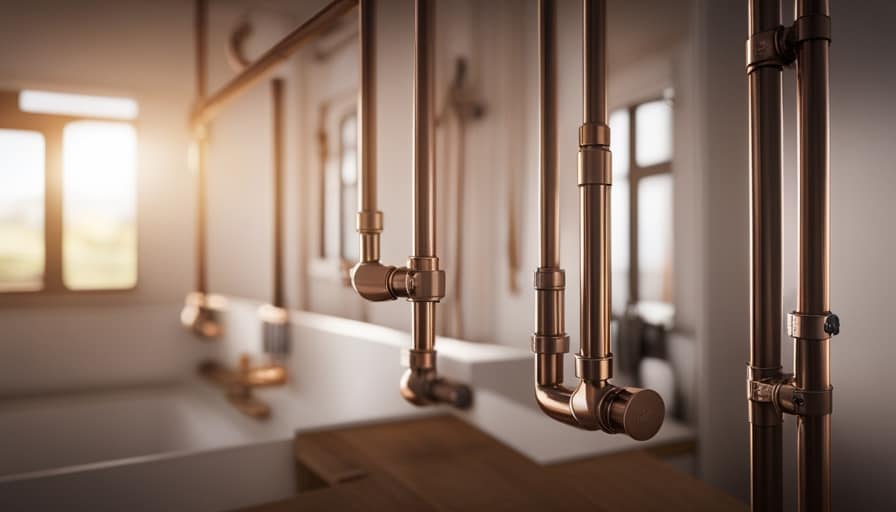Are you seeking inspiration for your ideal tiny house? Check out our selection of the top 10 must-see tiny house tours!
From cozy cabins in the woods to modern minimalist homes, we’ve handpicked the best tiny houses that will leave you in awe. Get ready to explore innovative designs, sustainable living, and charming vintage cottages.
Whether you’re a city dweller or a nature lover, these tours will show you the endless possibilities of tiny living.
Let’s dive into the world of tiny homes together!
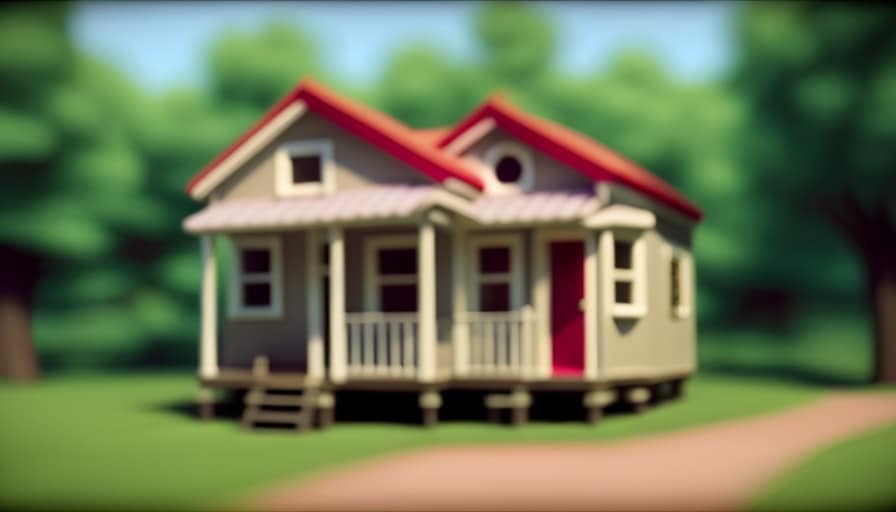
Key Takeaways
- Cozy cabin in the woods, perfect tiny beach house, urban living in a tiny city dwelling, rustic retreat in the mountains, and modern minimalism in a tiny home are some of the must-see tiny house tours.
- Tiny living offers benefits such as minimal living expenses, minimal environmental impact, encouragement of a minimalist lifestyle, and a closer connection to nature. However, it also presents challenges such as limited storage space, the need to downsize possessions, planning for mobility and utilities, finding personal space and privacy, and insulation and climate control challenges.
- Sustainable living in tiny homes involves using sustainable materials, off-grid living with solar panels and rainwater collection, maximizing natural light and ventilation, and implementing composting toilets and graywater recycling.
- Creating a quaint cottage with big style can be achieved through the use of vintage furniture and cozy textiles, soft pastels and muted tones, clever storage solutions, antique accessories and vintage accents, and the creation of cozy nooks and intimate spaces.
A Cozy Cabin in the Woods
We’ve stumbled upon a delightful cabin in the woods that will transport us back in time. This cozy retreat is a perfect escape from the hustle and bustle of modern life.
As we step inside, the warm and inviting atmosphere immediately embraces us. The cozy decor, with its rustic charm and vintage touches, creates a sense of nostalgia. The wooden beams overhead and the crackling fireplace add to the rustic ambiance.
What makes this cabin even more unique is its off-grid living setup. Solar panels provide electricity, and a rainwater collection system ensures a sustainable water source. Living off the grid allows us to reconnect with nature and appreciate its beauty.
This cabin truly offers a one-of-a-kind experience, where simplicity and comfort go hand in hand.

The Perfect Tiny Beach House
Let’s explore the perfect tiny beach house that will make us feel like we’re on a never-ending vacation. Picture waking up to the sound of crashing waves and stepping out onto your own private stretch of sand. This tiny beach house is the epitome of beachfront living, designed to maximize your connection with the ocean.
Here are five features that make this tiny beach house a dream come true:
-
Panoramic windows: Floor-to-ceiling windows surround the living area, offering breathtaking views of the coastline from every angle.
-
Nautical accents: Coastal decor fills the space, with seashells, driftwood, and shades of blue creating a serene and relaxing atmosphere.
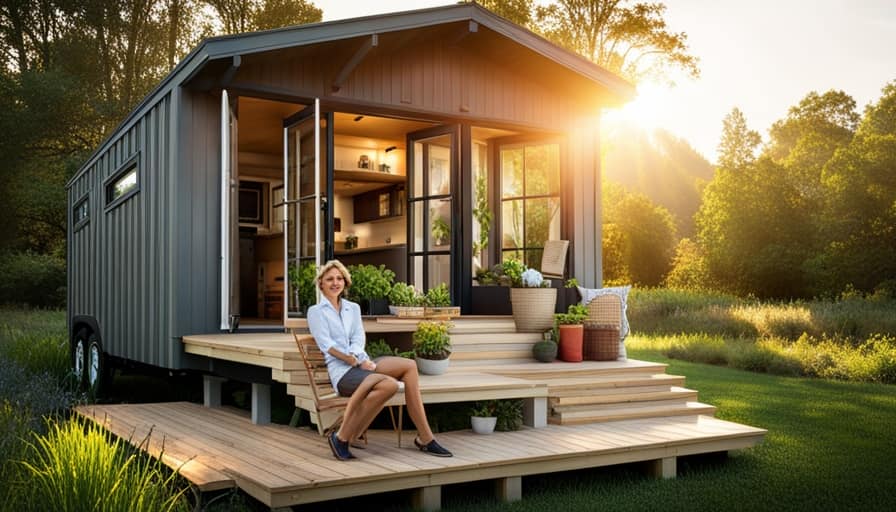
-
Outdoor shower: Rinse off the salt and sand in an outdoor shower nestled amidst lush tropical foliage.
-
Private deck: Enjoy sunsets and starry nights on your own spacious deck, complete with comfortable loungers and a dining area for al fresco meals.
-
Convertible furniture: Cleverly designed furniture transforms to accommodate guests, ensuring you can invite friends and family to share in the beachfront bliss.
Get ready to experience the ultimate in coastal living with this perfect tiny beach house.

Urban Living in a Tiny City Dwelling
We can’t wait to explore the unique challenges and benefits of urban living in a tiny city dwelling. Urban sustainability and minimalist living are at the core of this lifestyle, as individuals seek to make the most of limited space while reducing their environmental impact.
In bustling cities, finding affordable housing can be a challenge, but tiny city dwellings offer a solution. These compact homes are designed to maximize every inch of space, with innovative storage solutions and multipurpose furniture. Living in a tiny city dwelling encourages a simpler and more intentional way of life, where possessions are minimized and experiences are prioritized. It’s a chance to be part of a vibrant urban community and contribute to a more sustainable future.
Now, let’s transition into the next section and discover the charm of a rustic retreat in the mountains.
A Rustic Retreat in the Mountains
We headed up the winding mountain road, eagerly anticipating the breathtaking views and cozy charm that awaited us at our rustic retreat.
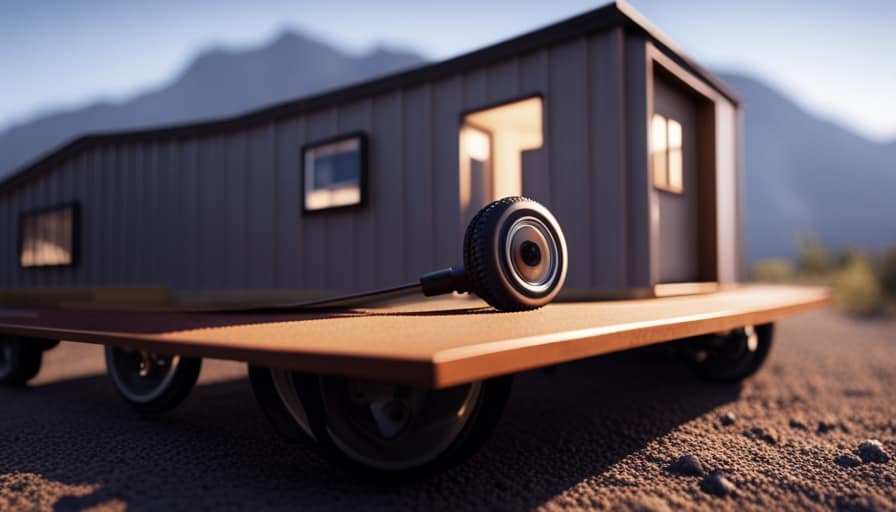
As we arrived, the sight of the cabin nestled amongst towering pine trees took our breath away.
The rustic decor of the interior instantly transported us to a simpler time, with its warm wooden furnishings and vintage accents. The crackling fireplace and soft, plaid blankets invited us to sit back and relax.
Outside, the majestic mountains surrounded us, creating a sense of tranquility and peace. We couldn’t resist exploring the hiking trails and breathing in the crisp mountain air.
Our rustic retreat in the mountains truly provided the perfect escape from the hustle and bustle of everyday life.
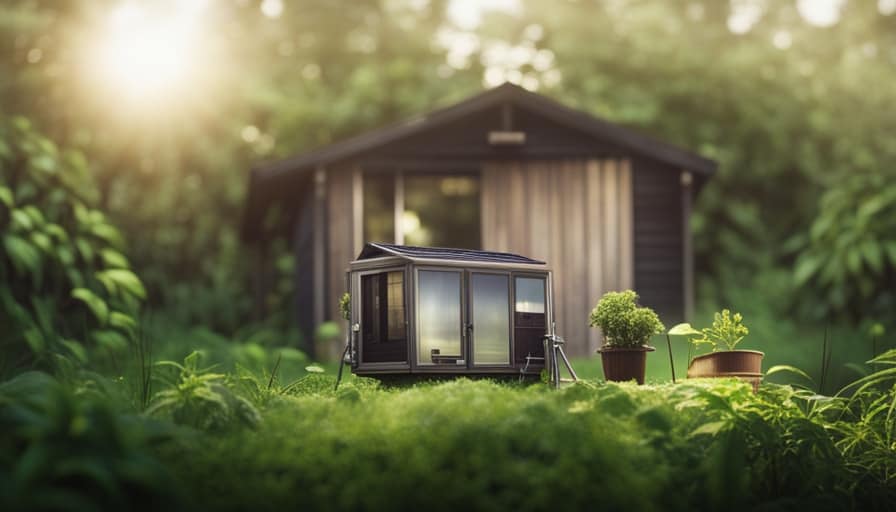
Now, let’s transition to the next section where we delve into the allure of modern minimalism in a tiny home.
Modern Minimalism in a Tiny Home
Our first stop on the tour showcased the sleek elegance and efficient design of modern minimalism in a tiny home. This tiny house exemplified the perfect marriage of style and sustainability, proving that less is truly more.
The interior of the home was a study in simplicity, with clean lines, neutral colors, and minimal clutter. Every element served a purpose, maximizing the use of space without sacrificing comfort. The use of sustainable materials and energy-efficient appliances further emphasized the commitment to sustainable living.
In this tiny home, modern minimalism wasn’t just an aesthetic choice, but a way of life. It reminded us that living simply can lead to a more fulfilling and environmentally conscious existence.
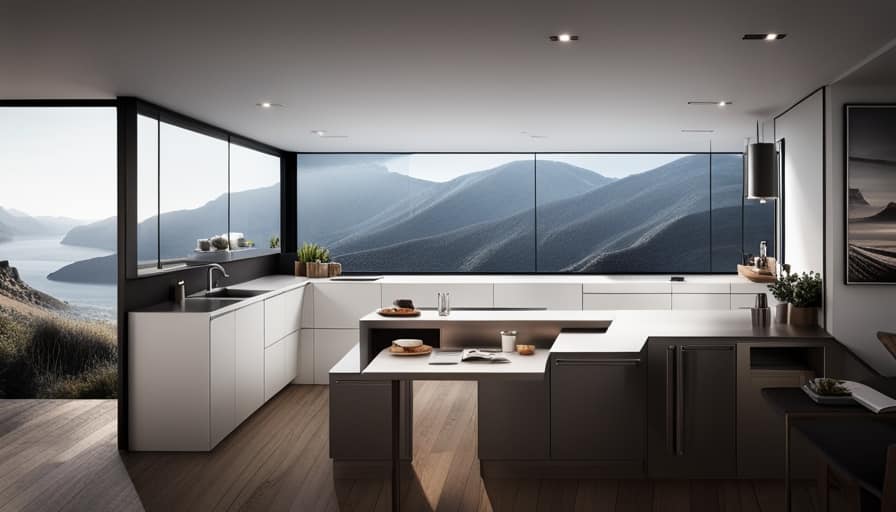
As we continued our tour, we couldn’t help but wonder how a tiny house on wheels could offer the ultimate mobile living experience.
A Tiny House on Wheels: The Ultimate Mobile Living
When it comes to tiny houses, the idea of mobility opens up a whole new world of possibilities. Living in a tiny house on wheels allows you to travel and explore while still having the comforts of home.
One of the biggest benefits of mobile living is the freedom it offers, giving you the flexibility to change your scenery whenever you please. However, it also comes with its own set of challenges, such as limited space and the need to be mindful of weight distribution.
But with clever space-saving design ideas and a minimalist mindset, living in a tiny house on wheels can be the ultimate mobile living experience.
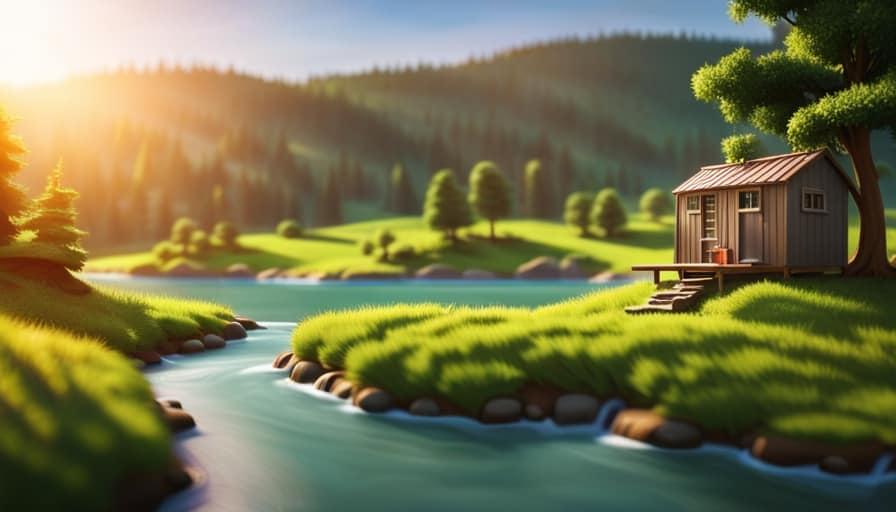
Benefits of Mobile Living
Living in a mobile tiny house is undeniably liberating, as it allows us to effortlessly travel and explore new places. The benefits of mobile living are numerous and can greatly enhance our lives. Here are some reasons why living in a tiny house on wheels offers sustainability advantages and financial freedom:
-
Flexibility: With a mobile tiny house, we’ve the flexibility to move whenever and wherever we want, allowing us to experience different landscapes and cultures.
-
Reduced expenses: By downsizing to a tiny house, we can significantly reduce our living expenses, including mortgage or rent payments, utilities, and maintenance costs.
-
Minimal environmental impact: Tiny houses are designed to be energy-efficient and use fewer resources, resulting in a smaller carbon footprint.
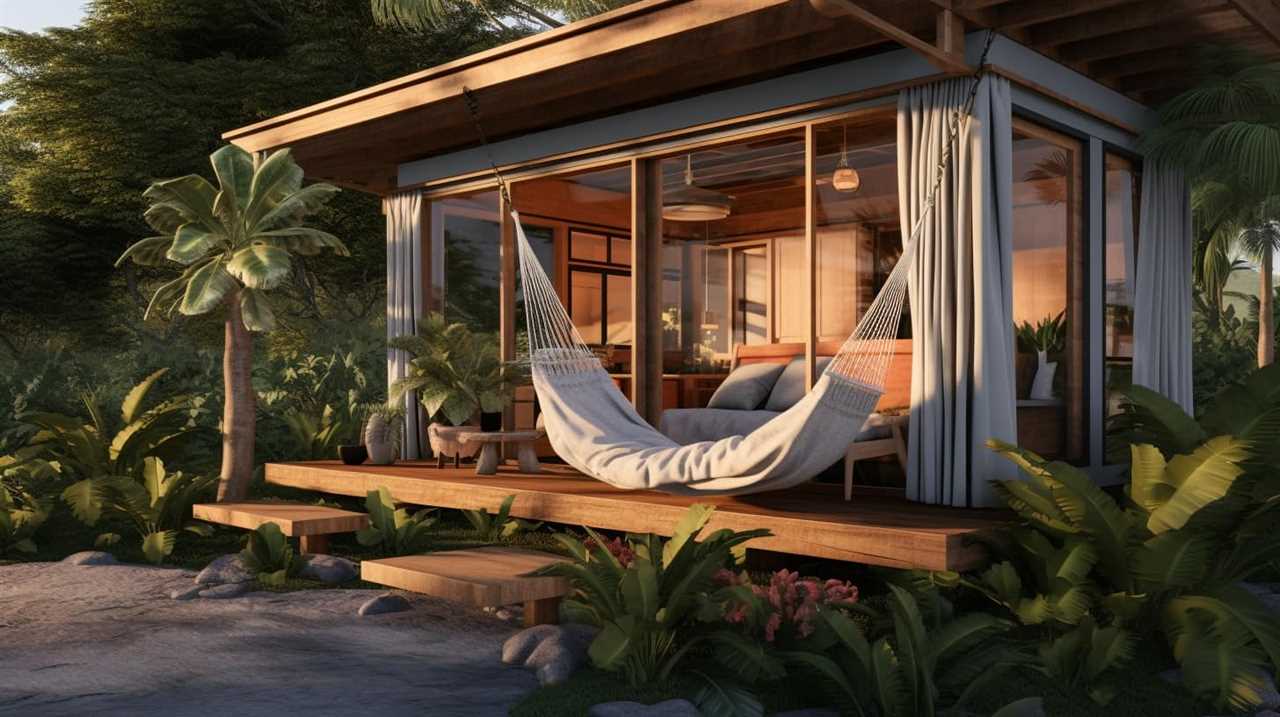
-
Minimalism and simplicity: Living in a mobile tiny house encourages a minimalist lifestyle, helping us focus on what truly matters and reducing clutter and distractions.
-
Connection to nature: With the ability to park our tiny house in beautiful natural settings, we can immerse ourselves in nature and enjoy a closer connection to the outdoors.
Living in a mobile tiny house offers not only the freedom to explore but also the opportunity to live a more sustainable and financially independent lifestyle.
Space-Saving Design Ideas
With careful planning and creative thinking, we can maximize the limited space in a tiny house on wheels and create a functional and comfortable living environment. Space-saving furniture and compact storage solutions are essential in achieving this goal. In a tiny house on wheels, every square inch counts, so it’s crucial to choose furniture that serves multiple purposes.

For example, a sofa that can be transformed into a bed or a coffee table that doubles as a dining table. Additionally, utilizing vertical space is key. Installing shelves and cabinets that go all the way up to the ceiling allows for efficient storage. Foldable and collapsible furniture also helps to save space when not in use.
By incorporating these space-saving design ideas, we can make the most of every inch in a tiny house on wheels and create a cozy and functional living space.
However, living in a tiny house on wheels does come with its challenges.
Challenges of Tiny Living
One of the challenges we face in tiny living is adjusting to the limited space and mobility of a tiny house on wheels. Living in a tiny house requires embracing a minimalist lifestyle, where every item must be carefully chosen and organized.
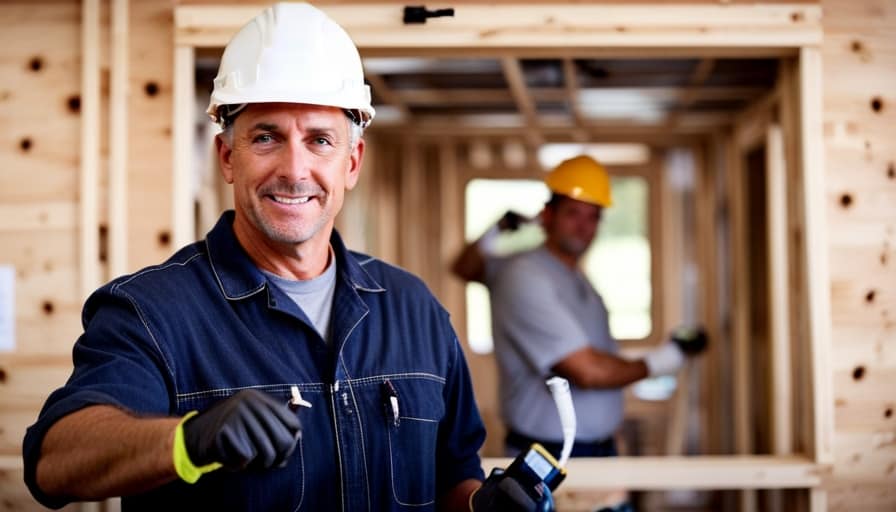
Here are five challenges that come with tiny living:
-
Limited storage space: With a smaller footprint, finding creative storage solutions becomes essential to maximize the limited space available.
-
Downsizing possessions: Adopting a minimalist lifestyle means letting go of unnecessary belongings and prioritizing only the essentials.
-
Mobility: While the ability to move your home anywhere is a great advantage, it also requires careful planning and consideration, especially when it comes to finding parking and hooking up utilities.

-
Privacy: Living in close quarters can pose challenges when it comes to finding personal space and privacy within a tiny house.
-
Weather conditions: The compact nature of tiny houses can make them more susceptible to extreme temperatures, requiring additional insulation and climate control measures.
Despite these challenges, tiny living offers the opportunity for financial savings and a simpler, more intentional way of life.
Sustainable Living in a Tiny Eco-Friendly Home
We’ve discovered an incredible tiny eco-friendly home that showcases sustainable living through its innovative design and use of renewable energy sources.
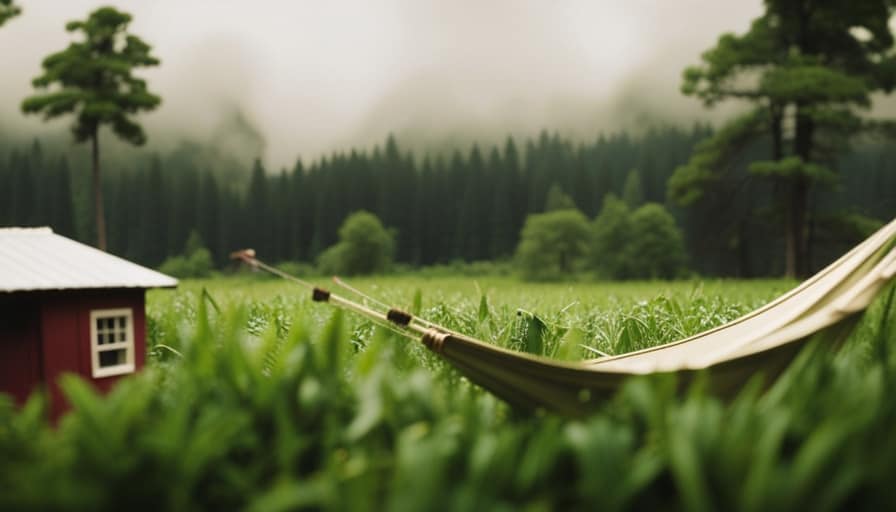
This tiny home is built using sustainable materials such as reclaimed wood and recycled metal, minimizing its environmental impact. It’s completely off-grid, relying on solar panels and a rainwater collection system for power and water supply.
The home’s design maximizes natural light and ventilation, reducing the need for artificial lighting and air conditioning. Inside, you’ll find energy-efficient appliances and fixtures, further reducing energy consumption.
The home also features a composting toilet and a graywater recycling system, ensuring that waste is minimized and reused whenever possible.
Living in this tiny eco-friendly home not only allows you to live sustainably, but it also provides a sense of connection to nature and a simpler way of life.
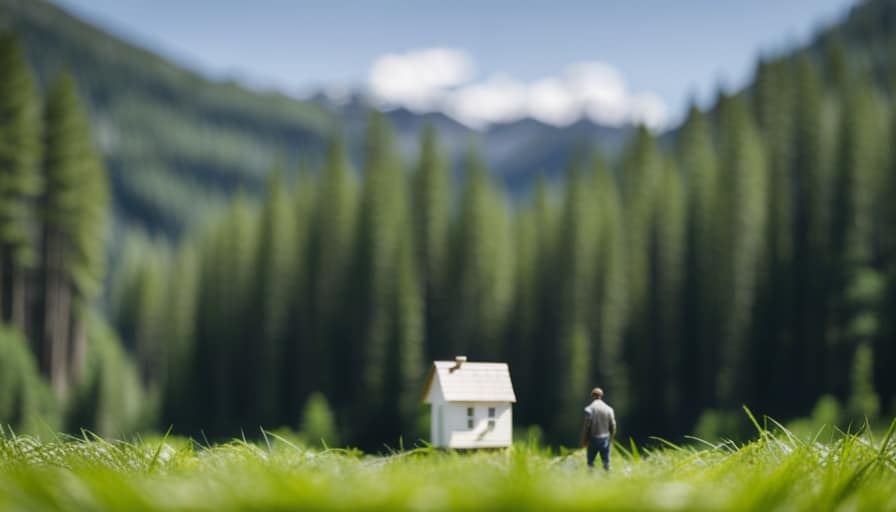
A Quaint Cottage With Big Style
Can you imagine how a quaint cottage can have big style? Well, let me tell you, it’s all about the details! With the right decor and clever small space organization, even the tiniest cottage can exude charm and style.
Here are some key elements to achieve a quaint cottage with big style:
-
Rustic charm: Incorporate vintage furniture, weathered wood, and cozy textiles to create a warm and inviting atmosphere.
-
Cottage-inspired colors: Opt for soft pastels, floral prints, and muted tones to capture the essence of a traditional cottage.

-
Clever storage solutions: Utilize built-in shelves, hidden compartments, and multifunctional furniture to maximize storage in small spaces.
-
Vintage accents: Add antique accessories, such as old clocks, vintage signs, and delicate china, to give your cottage a touch of nostalgia.
-
Cozy nooks: Create intimate spaces with comfortable seating, plush pillows, and soft lighting, perfect for curling up with a good book or enjoying a cup of tea.
With these elements, your quaint cottage will be transformed into a stylish oasis that will delight both you and your guests.

Charming Vintage Tiny Homes
Let’s take a step back in time and explore the world of charming vintage tiny homes.
These unique dwellings offer retro design inspiration that will transport you to a bygone era.
From clever space utilization to cozy and inviting ambiance, these tiny homes prove that vintage charm can be found in the smallest of spaces.
Retro Design Inspiration
We’re excited to take you on a journey through the world of retro design inspiration in these charming vintage tiny homes. Step inside and be transported back in time with the unique retro decor and vintage furniture that adorn these cozy spaces.
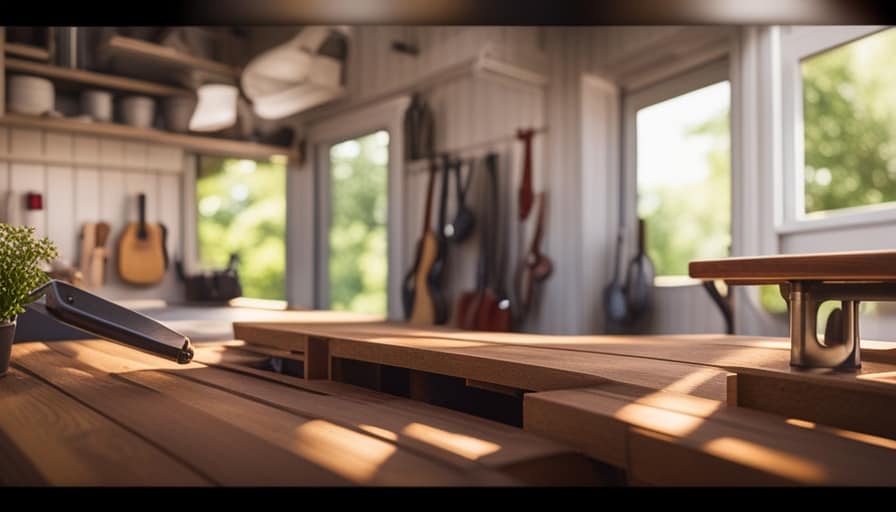
Here are five elements that will surely inspire your own retro-themed tiny home:
-
Bold, vibrant colors: From neon pinks to bright oranges, these tiny homes are filled with lively hues that instantly capture attention.
-
Retro appliances: Discover old-school refrigerators, vintage stoves, and classic kitchen gadgets that add a nostalgic touch to the space.
-
Mid-century modern furniture: Sleek lines, tapered legs, and funky patterns are all characteristic of the mid-century modern era, and these tiny homes showcase them beautifully.
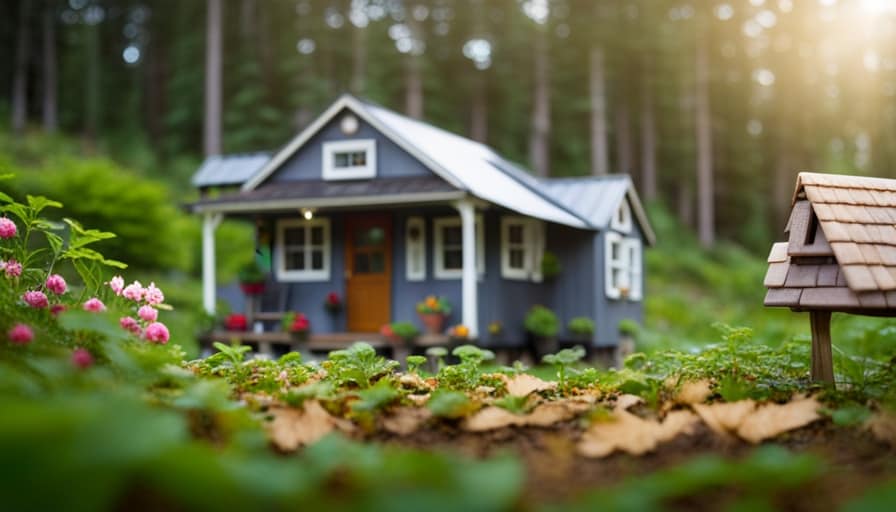
-
Vintage accessories: Think vinyl records, rotary telephones, and retro artwork that bring a sense of nostalgia and whimsy to these tiny homes.
-
Wallpaper: Retro-inspired wallpaper in bold prints and vibrant colors can transform even the smallest of spaces into a lively and inviting oasis.
Now that we’ve explored the retro design inspiration, let’s move on to the next section and discover how these tiny homes creatively utilize their limited space.
Creative Space Utilization
We’ve discovered some truly ingenious ways that charming vintage tiny homes creatively utilize their limited space. These homes are a testament to the power of smart storage and multi-functional furniture.

Every nook and cranny has been carefully designed to maximize functionality without sacrificing style. From hidden storage compartments under the stairs to built-in shelves that double as seating, these homes make every inch count. Old trunks are repurposed as coffee tables with hidden storage inside, and vintage suitcases are transformed into stylish side tables.
The creative use of space in these vintage tiny homes not only showcases the ingenuity of their owners but also inspires us to think outside the box when it comes to our own living spaces.
And speaking of living spaces, let’s move on to the next section and explore the cozy and inviting ambiance these homes offer.
Cozy and Inviting Ambiance
We have encountered numerous charming vintage tiny homes that exude a cozy and inviting ambiance, making them a delight to explore. These homes are designed with a focus on creating a comfortable living space that feels warm and welcoming.
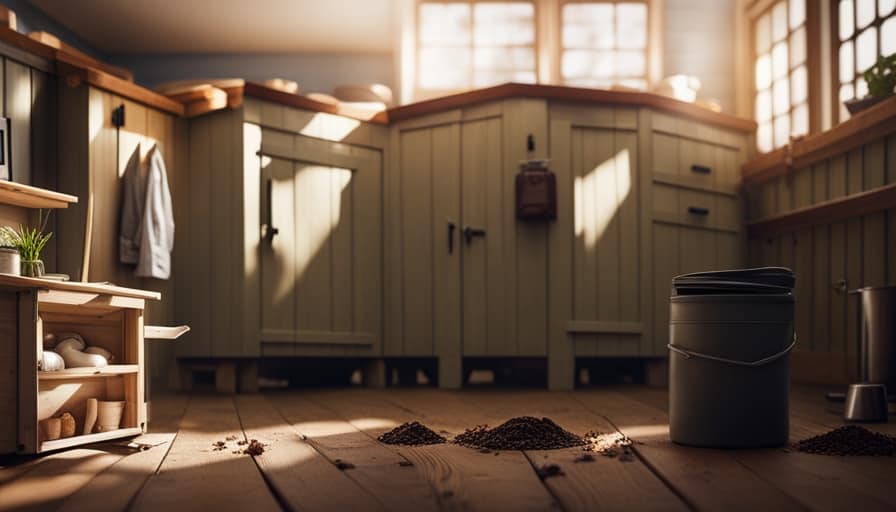
Here are some key features that contribute to their cozy interior design:
-
Rustic wooden accents: The use of reclaimed wood for walls, floors, and furniture adds a rustic charm to the space.
-
Soft and plush textiles: From fluffy rugs to cozy throw blankets, these vintage homes are adorned with soft textiles that invite you to snuggle up and relax.
-
Warm color palettes: Earthy tones like warm browns, deep reds, and soft yellows create a cozy atmosphere that feels calming and inviting.
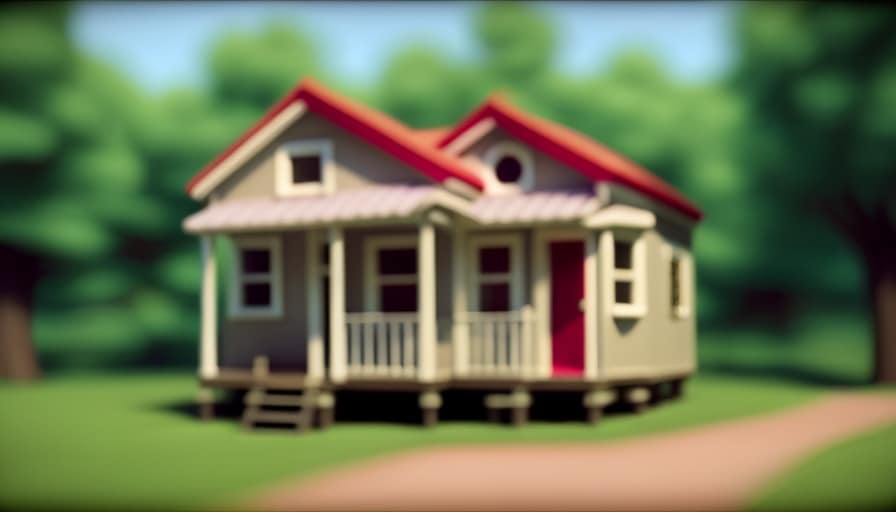
-
Vintage decor: Antique furniture, vintage artwork, and retro accessories add character and nostalgia to the space, making it feel like a cozy retreat.
-
Fireplace or wood stove: A crackling fire adds both warmth and ambiance, creating a cozy focal point in the living area.
Step inside one of these charming vintage tiny homes and you’ll instantly feel a sense of comfort and relaxation. Each detail has been thoughtfully curated to create a space that isn’t only aesthetically pleasing but also a cozy sanctuary for its inhabitants.
Innovative Designs: Pushing the Boundaries of Tiny Living
Let’s explore how these innovative designs are pushing the boundaries of tiny living. The world of tiny houses is constantly evolving, and designers are finding new and creative ways to maximize space and functionality. These innovative designs not only make tiny living more practical, but they also challenge our traditional notions of what a home should look like.

| Design Feature | Description |
|---|---|
| Vertical Space Utilization | Tiny houses are no longer limited to a single level. Many designs now incorporate loft spaces and mezzanines, utilizing vertical space to maximize living areas. |
| Transforming Furniture | Innovative furniture designs allow for multiple functions in one piece. From beds that double as sofas to tables that fold out into dining areas, these pieces save space while maintaining functionality. |
| Compact Appliances | Manufacturers are creating smaller, energy-efficient appliances specifically designed for tiny houses. From compact stoves and refrigerators to washer/dryer combos, these appliances meet the needs of tiny house dwellers without sacrificing convenience. |
| Outdoor Living Spaces | Tiny house designs are increasingly incorporating outdoor living areas, such as rooftop decks and foldable patio spaces. These additions expand the usable space and create a seamless connection between the indoors and outdoors. |
These innovative designs are pushing the boundaries of what it means to live in a tiny house. They allow for a more comfortable and efficient lifestyle, proving that size is not a limitation when it comes to creating a beautiful and functional home. So, whether you’re considering downsizing or simply intrigued by the possibilities, exploring these innovative designs will surely inspire you to think outside the box and embrace the world of tiny living.
Frequently Asked Questions
How Much Does It Cost to Build a Tiny House?
Building a tiny house can be a cost-effective alternative to traditional homes. It’s important to budget for construction costs, considering factors like materials, labor, and permits. By carefully planning, you can create your dream tiny home within your means.
Are Tiny Houses Legal in All States?
Tiny house regulations and zoning laws vary by state. While some states have embraced the tiny house movement and created legal frameworks, others have stricter regulations. It’s important to research and understand the laws in your area before building a tiny house.
Can a Tiny House Be Customized to Fit My Specific Needs?
Yes, a tiny house can be customized to fit your specific needs. You can personalize the layout with a unique design and modify it to include accessibility features like wheelchair accessibility.
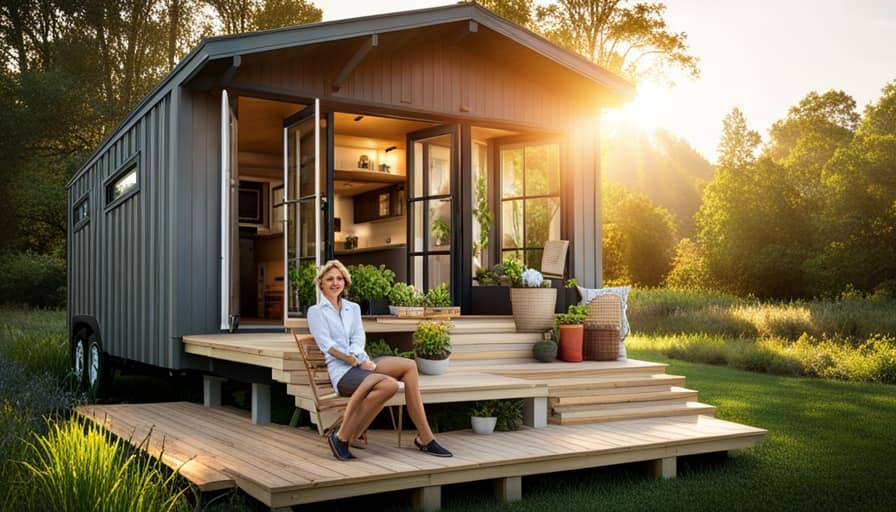
What Are the Challenges of Living in a Tiny House?
Living in a tiny house presents challenges such as living space limitations and the need for creative storage solutions. However, with thoughtful design and organization, these obstacles can be overcome, resulting in a cozy and efficient living space.
Are There Any Financing Options Available for Purchasing a Tiny House?
Financing options for purchasing a tiny house vary, but there are loan options available. Whether through traditional lenders or specialized tiny house financing companies, it’s important to explore all possibilities to find the best fit for your needs.
Conclusion
After watching these top 10 must-see tiny house tours, you’ll be convinced that big things really do come in small packages!
From cozy cabins in the woods to charming vintage homes, these tiny abodes are the epitome of innovation and style.
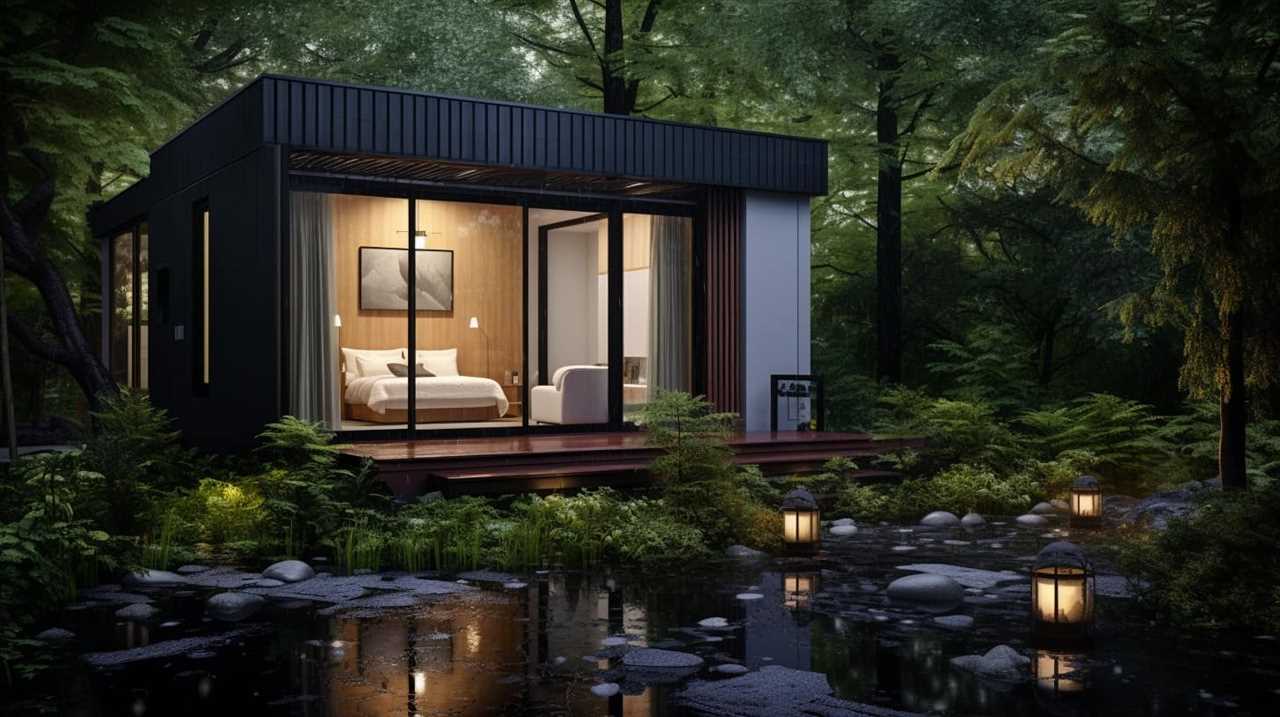
Get ready to be amazed by the creative designs and sustainable living options that will make you rethink the idea of traditional housing.
So grab your popcorn and prepare to be blown away by these pint-sized wonders!
I’m Theodore, and I love tiny houses. In fact, I’m the author of Tiny House 43, a book about tiny houses that are also tree houses. I think they’re magical places where imaginations can run wild and adventures are just waiting to happen.
While tree houses are often associated with childhood, they can be the perfect adult retreat. They offer a cozy space to relax and unwind, surrounded by nature. And since they’re typically built on stilts or raised platforms, they offer stunning views that traditional homes simply can’t match.
If you’re looking for a unique and romantic getaway, a tree house tiny house might just be the perfect option.
